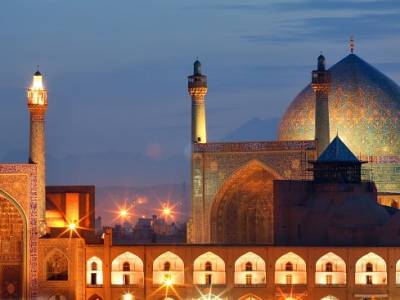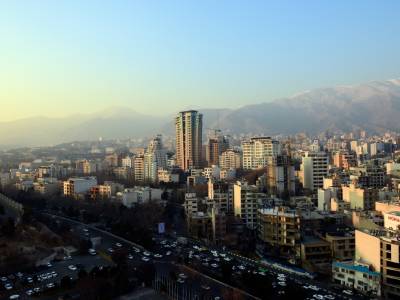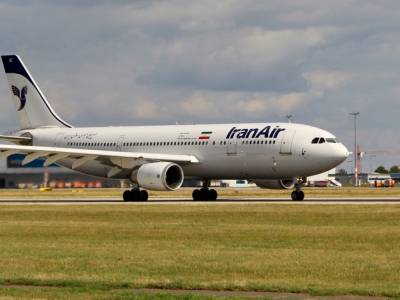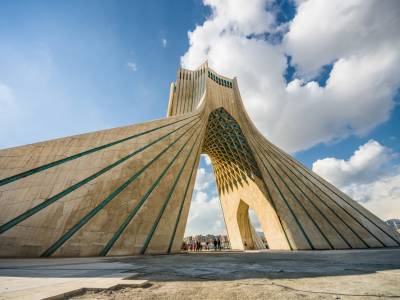-
Iran
Iran – Regolamento sulle Transazioni in Valuta Straniera
26 Settembre 2018
- Investimenti
Il tasso di cambio è da sempre questione centrale nell’economia iraniana, basata principalmente sul settore del petrolio. A tal proposito, negli ultimi decenni le autorità governative hanno adottato diversi regolamenti aventi tutti lo scopo di gestire e calmierare l’impatto delle fluttuazioni del tasso di cambio sull’economia reale iraniana.
La situazione del mercato monetario, però, nonostante la conclusione dell’accordo sul nucleare iraniano (PACG – Piano d’azione congiunto globale) e la revoca delle sanzioni economiche contro l’Iran, non è migliorata. Negli ultimi mesi, infatti, il mercato monetario iraniano ha visto crescere improvvisamente la domanda di valute straniere come il Dollaro americano (“USD”) e l’Euro. Tale sviluppo caotico, conosciuto anche come “foreign currency rate jump crisis”, ha portato all’applicazione di una nuova norma da parte delle autorità iraniane al fine di uniformare il tasso di cambio per le valute.
Una Nuova Norma
Alla luce di quanto appena visto, l’11 aprile 2018 il Consiglio dei Ministri ha adottato una legge mirata a regolare e organizzare il mercato valutario in Iran. La novità più importante è il paragrafo 5, il quale stabilisce un tasso fisso di cambio – il “Nerkh Mobadelee” – pari a 42,000 IRR per dollaro.
Oltre a questo paragrafo, bisogna tenere in considerazione altre disposizioni normative che hanno riguardato questo nuovo regime monetario.
Importazione ed Esportazione di Beni e Servizi
Secondo il par. 1 della legge appena vista, qualsiasi ordine per l’importazione di beni in Iran – anche attraverso Free Trade Zones – deve essere soggetta a registrazione. La comunicazione n. 9 rilasciata dalla Banca Centrale dell’Iran (“CBI”) il 14 aprile 2018 ha precisato che questa registrazione è un prerequisito per la fornitura di qualsiasi valuta straniera da utilizzare per portare a termine l’acquisto di beni e servizi dall’estero.
La valuta richiesta per gli ordini registrati sarà emessa attraverso il sistema bancario, in conformità ai regolamenti predisposti dalla CBI. Per l’attuazione di questo processo è stata sviluppata una piattaforma unificata per il cambio valuta, chiamata “NIMA”, all’interno della quale interagiscono i quattro operatori principali: importatori di beni e servizi in qualità di acquirenti di valuta, esportatori di beni e servizi in qualità di fornitori di valuta, banche e uffici di cambio in qualità d’intermediari che dirigono la valuta dai fornitori ai richiedenti e infine l’autorità di settore che determina il tasso di cambio e le valute di preferenza. In altre parole, importatori ed esportatori possono comprare o vendere valuta unicamente attraverso tale piattaforma NIMA.
In aggiunta, quando la valuta in questione è fornita dalla CBI sulla base del Nerkh Mobadelee (ovvero, il tasso di cambio fissato dal governo) ma la fattura non è ancora stata emessa, i documenti di spedizione devono essere presentati alla banca entro massimo sei mesi dall’emissione della moneta. Nel caso in cui i documenti di spedizione siano presentati tardivamente, la loro ammissione resta soggetta al parere del CBI e al pagamento della differenza tra il tasso di cambio della valuta al momento dell’emissione del conto e quello alla data di comunicazione dei documenti di spedizione alla banca (ove il tasso sia aumentato nel frattempo).
Valuta Straniera per i Viaggi all’Estero
La Comunicazione n. 2 della CBI chiarisce che la valuta straniera per i viaggi all’estero sarà erogata ai passeggeri alle frontiere aeroportuali solo una volta all’anno per un importo ma di Euro 1,000 (o l’equivalente in altra valuta). L’importo di valute straniere fornite ai passeggeri diretti in paesi confinanti e paesi del Common-Wealth, eccetto l’Iraq, è di 500 Euro (o l’equivalente in altra valuta). Tale valuta straniera può essere erogata solamente a passeggeri muniti di passaporto iraniano.
I passeggeri stranieri possono fare ingresso in Iran con un massimo di Euro 10,000 (o equivalente in altra valuta straniera); in caso di somma superiore, saranno tenuti a effettuare una dichiarazione in linea con le richieste della CBI.
Assegnazione di valuta straniera nei contratti di finanziamento
La Comunicazione n. 4 del 12 aprile 2018 della CBI regolamenta i contratti di finanziamento a seguito del nuovo assetto monetario, disponendo che tutti i pagamenti relativi a contratti di finanziamento (inclusi i pagamenti anticipati, il pagamento dei costi, ecc.) siano conformi al nuovo tasso di 42.000,00 IRR per ogni USD.
In aggiunta, per quanto riguarda i progetti che prevedono un’importazione di valuta straniera nel paese, questi dovranno prevedere altresì una fornitura rilevante di valuta straniera per far fronte ai pagamenti previsti.
Il Cambio della Valuta
La nuova normativa sopra esposta, al paragrafo 13, prevede inoltre alcune restrizioni sulle attività condotte dai cambia-valuta. In tale ambito, qualsiasi operazione di cambio e commercio della valuta straniera non conforme alle condizioni fornite dalla CBI verrà qualificata come contrabbando e perseguita ai sensi della legge.
Conclusione
Alla luce di tutto quanto appena visto, il pagamento di tutte le transazioni di import-export riguardanti l’Iran, dovrà essere effettuato attraverso un canale di controllo governativo, guidato dalla Banca Centrale dell’Iran. L’assegnazione della valuta deve essere soggetta a una ratifica di registrazione d’ordine e accettazione da parte della CBI.
Qualsiasi azienda che intenda operare in Iran dovrà uniformarsi a questa regolamentazione, almeno fino alla prossima modifica legislativa sul tema.
In this post we will briefly outline some legal aspects related to e-commerce in Iran, starting from the definition of the average Iranian user and main characteristics and advantages of e-commerce in the Islamic Republic, which is attracting several foreign investors.
We will then analyze the requirements for the issuance of online business licenses in Iran, which is mandatory in order to open an e-shop. Finally we will take a look at some successful examples of online business in Iran.
The average Iranian user
Some statistics regarding Iranian users active in the virtual space are useful for understanding the size of the Iranian market, and why it is attracting several investors.
According to the “Internet Data and Statistics”, Iran is the thirteenth country for number of internet users, as 57 million of Iranian (on 83 million of Iran’s population) have access to internet (approximately the 68% of the population), but Government sources believe these numbers are underestimated.
What matters for the purpose of this analysis, however, is that approximatively the 58% of the internet users search on the Internet is about information on goods and services and that – until the end of Azar 1394 (December 2015) – the average internet users are male (58%) and young (47% between 20 and 29 years old).
In addition, the 42% of the Iranian internet users are involved in electronic commerce and the 13% use the e-banking services.
Online Business Licenses in Iran
Whether carried out in the traditional way or electronically, all the businesses need a business-license to operate on the Iranian market. The most important law governing is the Union System Act 1971, amended in 1980, 2003 and in 2013, which provides that the business license is issued by the competent union or legal authority.
E-commerce is no exception, therefore all those who intend to sell goods or provide services using the virtual space must acquire a business license.
On February 19th, 2017 the Iranian Government issued an Executive Regulation in regard to the Issuance of License and Supervision on Businesses in Virtual Space and Network Marketing, dividing the activities in virtual space into two categories:
- Virtual Business;
- Network Marketing.
According to Paragraph 1 in Article 1, Virtual Business is a business established by any natural or legal person in order to provide products (goods or services) directly or indirectly on a wholesale or retail basis, to wholesalers, retailers and consumers through telecommunication means such as websites and digital software (applications).
According to Paragraph 2 of Article 1, Network Marketing is a method for selling products based on which the Network Marketing company uses its website to organize the sellers in order to sell their products directly to consumers in a place far from the regular business location. Through this method, each seller can introduce another marketer as it subset and create a multi-product sales group in order to increase sales.
The competent authority for issuance of licenses in this regard is the National Union. Therefore, any person who intends to acquire a license in order to have its activities carried out online, must apply on the website of Center for Development of Electronic Commerce (an organ of the Ministry of Industry, Mine and Commerce, hereinafter: “CDEC” – www.enamad.ir) in order to acquire the Reliance Symbol, which is a symbol necessary to certify the identity and competence of online activities.
Requirements for the Online Business License
Article 3 of the Executive Regulation on Issuance of License and Supervision on Businesses in Virtual Space and Network Marketing, which governs the Issuance of Online Business Licenses in Iran, provides that business licenses shall be issued according to the following procedure:
- Establishment of the virtual business conforming to the checklists provided by the CDEC.
- Registration of application in E-Namad website (then the CDEC automatically submits the application to the unions’ website).
- Upload of the required documents, which we will list below.
- Issuance and submission of the license (after verifying the uploaded documents and the original copies thereof) to the applicant within 15 days and submission of the license information to E-Namad website.
- Grant of Electronic Reliance Symbol concurrent with issuance of the license.
Furthermore, the said Regulation specifies the required documents for issuance of business license, as follows:
- Office or legal domicile address of the applicant;
- Negative criminal record from the Police;
- Certificate of the relevant Tax Organization regarding tax compliance;
- Certificate for attendance in educational courses of commerce and business;
- Confirmation of specialized features regarding virtual business issued by the CDED;
- Photocopy of ID-card/Company-Registration number, plus passport/work-permit for foreigners;
- Photocopy of Military Service Termination Card or Permanent or Medical Exemption Card for men under 50 or a Student Certificate.
In addition to those, the Regulation provides some other documents for particular sectors, so it is advisable to contact an Iranian expert in the matter to verify the compliance with all applicable regulations. For instance, the Cultural Heritage, Handicrafts and Tourism Organization of Iran has set out some specific criteria for travel and tourism activities in the virtual space, so travel agency services, accommodation centers, private entities and other tourism services must follow a special procedure to render their services on virtual space.
Successful Examples of Iranian Start-ups
In order to become familiar with this sector, hereinafter we would like to report some inspirational examples of investments.
- Snapp
Snapp is an Iranian ride hailing company which renders its services online. The Snapp application automatically connects the users to the nearest driver and shows the driver the user’s location. Afterwards, the nearest ready driver will pick up the users from their location, and Snapp calculates the price beforehand. This price is normally lower than the Taxi Agency Unions prices and can be received either in cash or via online payment or credit card.
- Digikala
Digikala is the name of one of the biggest e-marketplaces in Iran. Cellphones, laptops and computers, digital cameras, office appliances, automobiles, watches, home appliances, instruments, jewelry, toys, clothes and books are some of the items sold on this website. One of the features of this website is the detailed and comprehensive reviews of different types of digital goods which can be a reliable source for purchasers.
- Pintapin
Pintapin is a comprehensive tool for rendering travel services online. Accommodation services are listed in Pintapin and users can book online their desired location. It is also possible to submit the information regarding your destination, duration of stay and number of companions in order to receive suitable suggestions from Pintapin.
- Bamilo
Bamilo is probably the most important Marketplace businesses in Iran. It started its activity in 2014 and is now among the most viewed websites in Iran. Based on the Amazon-model, the online store is considered as the main Iranian middleman between suppliers and consumers.
- Eskano
Eskano is a smart system for searching real estate in Iran which is performed under international standards. With its huge database of transferable real estates divided between several Iranian cities, Eskano facilitates the sale and lease process, also with the possibility of setting up appointments directly through the website.
The author of this post is Mohammad Rahmani.
When one thinks about Iran energy resources, immediately come to mind the fossil fuels resources – such as oil and gas – that characterize Iran’s economy. But Iran has also a great potential in the field of renewable energies – such as wind, solar, biomass and geothermal energy – which makes the Asian country one of the most interesting for the energy sector.
The strategic plan of Iran for the energy sector provides for the optimization of fossil fuels exploitation and the improvement of renewable energy production, in order to satisfy the growing need to energy in the country.
In this short post r we will see how foreign investors can apply to the Organization of Renewable Energy of Iran to obtain the permits needed, build renewable energy plants and obtain the preferential rates promoted by the Iranian Government.
In fact, according to recent laws and regulations, the Organization of Renewable Energy of Iran (SUNA) – under auspices of Energy Ministry of Iran – purchases the electric energy from investors through a Power Purchase Agreement (PPA). PPA establishes new feed-in tariffs for a period that recently has been increased from 5 to 20 years. It also should be noted that feed-in tariffs differ by power plant technology type and will be annually adjusted, without altering the contracts already in force.
The Procedure for Project Registration
As a first step of the procedure, foreign investors need to submit an application for project registration to SUNA. As only Iranian legal entities are allowed to apply, foreign investors need to incorporate a company under Iranian law, the shares of which may also be wholly owned by foreign investors (read here my post on setting up a company in Iran). Alternatively, foreign investors may purchase shares of existing Iranian companies, which would be the applicant of the registration.
After verifying compliance with the necessary requirements, the construction permit will be issued. It is noteworthy that the foreign investor holding the permit is not allowed to transfer more than 25% of its shares.
Afterwards, foreign investors need to acquire three different licenses: the Environmental permit, the Grid Connection permit and the Land permit. These permits shall be obtained within six months from the construction permit. If the applicant has obtained 2 of 3 permits at the expiry of the period, this might be extended.
Only after obtaining the said three permits, the foreign investors may conclude the Power Purchase Agreement with SUNA and start the construction of the power plant.
Please note also that in order to benefit from the abovementioned tariffs, Bio Mass, Geothermal and Micro Hydro power plants have to reach commercial operation within 30 months. This period is reduced to – respectively – 24 and 15 months for Wind Farms and Solar power plants. If these periods have passed before starting of the commercial operation, the then-current feed-in tariffs would apply.
Notwithstanding these challenges, Iran is one of the most attractive markets of renewable energies, with vast resources of renewable energies and supporting governmental policies.
It is evident that establishing a power plant requires different legal stages aimed, mainly but not only, to obtain the essential licenses/permits by complying with State regulation. Accordingly, it is of utmost importance to get in touch with Iranian lawyers specialized in this field, in order to have a comprehensive consultancy, which leads the investor from the pre-investment analysis to the construction of the energy plant.
Patent can be registered in Iran through an electronic application to the Iranian Intellectual Property Center of State Organization for Registration of Deeds and Properties. Iran regulations regarding this issue include Patents, Industrial Designs and Trademarks Registration Act (2008) and the Executive Regulation of Patent, Industrial Designs and Trademarks Registration Law (2009).
According to article 5 of the above mentioned Act, also Iran – as many other jurisdictions, such as Germany, Japan and EU – applies the First to File system.
Here below we are going to analyse the main steps of National Patent Registration: Application and Examination, Objection to Rejection, Inquiry and Registration or Rejection.
Application and Examination
The process of registration is mostly carried out electronically. The application is filed through the website of Iranian Intellectual Property Center.
The second step to register a Patent in Iran is the examination. Iranian regulations provide two types of examination regarding patent applications: Formal examination and Substantive examination.
After the classification made in accordance with the IPC (International Patent Classification), begins the formal examination of the application. At this stage, if the application information or appendices are incomplete, a notice of defects shall be issued by the Iranian registration authority and the applicant shall remove the defects and electronically submit all the correct information and appendices, within 30 days for the residents of Iran or 60 days for those residing overseas.
Once passed the formal examination, the registration authority has 6 months to verify that the application complies with the provisions of the abovementioned Executive Regulation. In the case that the patentability of the application is uncertain, a notice of conditional rejection shall be sent to the applicant, which shall submit the relevant reasons and documents in response to the patent rejection notice.
On the contrary, if the patentability of the application is certain, a research will be conducted in the database of the Intellectual Property Center to verify if there is a similar Patent. If so, a declaration regarding the existence of similar records shall be issued and the applicant shall prepare a report which explains the differences between the two records. If the research results show an identical previous registration, a rejection notice will be issued.
Objection to Rejection
At this stage, if the applicant has an objection, he can submit the motivations and evidences in support of the application, only after having payed the fees for Commission. This latter shall investigate on the matter and issue an official decision, which can be challenged within 60 days for the residents in Iran and 120 days for those residing overseas.
Inquiry
Following the examinations and the eventual objection process, it is possible for the registration authority to carry out an inquiry from specialized authorities to help provide a better substantive examination that lasts at most three months.
Afterwards, the applicant should submit the response of the inquiry through the website. In this case, the next steps might differ based on the negative or affirmative result of the inquiry.
Registration or Rejection
If the inquiry is affirmative the acceptance notice shall be issued, the application shall be registered and the registration fees shall be paid by the applicant within 30 days for the residents of Iran and 60 days for those residing overseas. After having paid the fees, the registration notice will be issued and published within 30 days after registration in the official gazette and, at last, the patent certificate can be issued.
In the case that the inquiry is negative, a warning notice shall be issued before the definitive rejection. The applicant can submit some supplementary documents in order to integrate the application; otherwise the rejection notice shall be issued.
The author of this post is Mohammad Rahmani.
Aviation law is a highly specialized branch of law which addresses all concerns associated with different facets of air travel. There is a high number of international conventions that regulate aviation law at a global level. However, countries still have their own national framework. The three main areas of aviation law include: regulatory compliance, finances and claims.
Regulatory compliance
As far as Iran is concerned, Iranian aviation laws date back to a long time ago. The main body of law is Civil Aviation Law of 1959, which established the Civil Aviation Organization of Iran and also dealt with nationality of aircrafts. According to article 9 of this law, Iranian airlines have the exclusive right to domestic flights.
In addition to being a founding member state of the Chicago Convention on International Civil Aviation of 1944, Iran is part of the Warsaw system, having acceded to Warsaw Convention and two of its additional protocols, namely The Hague Protocol of 1955 and Guatemala Protocol of 1971. Iran is still not a member of the Montreal Convention on Unification of Certain Rules for International Carriage by Air signed in 1999. Montreal Convention could apply in cases when foreign airlines belonging to countries that have ratified this Convention operate flights in Iran. Similarly, the legal framework applicable to Iranian airlines operating anywhere in the world would be the one of Warsaw treaty.
Finances
As far as financing, purchase, chartering and lease of aircrafts are concerned, the latest directive, issued in 2014, allows only the purchase or chartering of aircrafts that are less than 15 years old. The new directive has also facilitated imports by reducing the existing bureaucracy. The aircraft could be purchased or leased. A lease, by definition, is transference of possession without transference of title. A lease is normally justified on grounds of financial reasons. The directive allows both ‘Dry’ and ‘Wet’ Lease for Iranian Air-lines. Dry Lease refers to leasing an aircraft without crew, maintenance and other services, while in Wet Lease the aircraft is crewed by the lessor. In this sense, a wet lease is an exception to the rule because the possession of the aircraft is not transferred and the aircraft is still operated by the lessor. There are also technical requirements for aircrafts that need to be satisfied. The leaser must possess a valid A.O.C. (air operator’s certificate) as well as a valid repair certificate and the foreign registration of the aircraft must be nullified.
Claims
Claims could arise in case of delay, luggage loss or aviation accidents. In the Iranian legal system, a clear distinction must be made between domestic and international airlines as there are different applicable laws. Even for domestic airlines, domestic and international flights are subject to different compensation mechanisms.
Since Iran is a party of the Warsaw Convention and its additional protocols, in principle, damages arising from flights should be subject to the Warsaw system. This is particularly true when Iranian airlines are operating international flights. However, in domestic flights operated by Iranian airlines, with the enactment of the new “Iran Civil Aviation Liability for Iranian Airlines Act” in 2012, there is a dual system according to which the Warsaw provisions still apply to damages incurred to passengers’ luggage, but damages to human life, including death and injuries, arising out of accidents for domestic flights are subject to Iran Islamic Penal Law. In other words, domestic airlines in domestic flights have been excluded from the Warsaw system as far as human injuries are concerned.
Another relevant issue is insurance programs available to airlines which cover costs arising out of such incidents. At present, many insurance programs are available to airlines.
The Foreign Investment Protection and Promotion Act of Iran of 2002 (FIPPA) does not give a precise definition of investment. However, according to article one of the law, it shall include any cash or non-cash flow of investment into the country and could encompass cash flows in foreign currency through the Iranian banking system or other legitimate means, machinery, spare parts, raw materials, CKD (knock-down-kit) and SKD (semi-knocked-down-kit) parts, intellectual property such as knowhow, patents and registered names, technical services, transferable share dividends and anything else if approved by the Council of Ministers. Foreign direct investments are allowed only in sectors in which private ownership is permitted. Build Operate Transfer (BOT) agreements and Civil Partnerships can be used in all areas, including upstream oil and gas industry, where foreign direct investment is prohibited due to a constitutional ban.
With the enactment of FIPPA, obtaining an investment license has become very straightforward. As a rule of thumb, there is a minimum amount of $ 300,000 to apply for a FIPPA license. The entire process of obtaining a license should take no longer than 45 days since the date of submission of documents to the Organization for Economic and Technical Assistance of Iran (hereinafter “OIETAI”), the main foreign investment authority in Iran. The application can be submitted directly by the foreign investor or their legal representative in Iran. The application form is downloadable online, must be completed in Persian or in English language and is reviewed by the OIETAI in coordination with the relevant Ministry. This stage may last up to 15 days. OETAI refers the application to the Foreign Investment Board which shall make the final decision regarding the admission of the foreign investment. The Foreign Investment Board is the highest-ranking authority and is the authority which finally issues the FIPPA license. The board includes six high-ranking official members of the government, the head of OETAI and some other prominent figures.
Should the Board reject the application, the decision can be appealed; in case the application is accepted, the license is signed by the Minister of Economic Affairs and Finance. The license is then communicated to the foreign investor by OETAI. The latter stage might take a maximum of 30 days, without considering the delay which may be caused by an appeal request.
A FIPPA license lists the amount of foreign investment, name of foreign and Iranian partners, type and area of investment, means for transference of capital contributions and the requirements regarding the investment project. The license is issued for a specific period during which at least part of the investment must be transferred to Iran. Foreign investors can file a request for an extension prior to the expiry of the deadline set by the Board of Investment, mentioning justified reasons for such a request. This request will be reviewed by the Board of Investment. If no investment is made during before the given deadline, absent justifiable excuses, the license will be revoked.
In general, merely commercial or trading activities do not qualify for FIPPA license unless they are accompanied by production. Investment in services may qualify for a FIPPA license subject to the decision of the Board.
Expats require a work permit, or employment license, in Iran for any type of employment. The organ in charge is the “Department General for Employment of Foreign Nationals”, a division of the Ministry of Cooperative, Labor and Social Welfare. The requirements are set in articles 120-129 of Iran Labor Law. In general, a work permit will be issued to a foreign worker only if there are no Iranians having the same level of education or expertise. This sets the bar very high. Foreigners cannot apply for a work permit on their own, unless they establish an enterprise in Iran. Employers need to submit their request and documents as are listed and announced by the Department General for Employment of Foreign Nationals for verification. This list normally requires identification documents of applicant including resume and expertise documents, letter of request from the employer attached with company official documents (registration notice, latest changes, chart and etc.). Prior to this stage, employers cannot enter into an employment contract with foreigners. Then, the documents are sent to the Technical Board for Employment of Foreign Nationals which is very strict regarding issuance of work permits.
FIPPA (“Foreign Investment Promotion and Protection Act”) allows foreign investors, directors and experts and their immediate family members to acquire visa, residence permit and work permit. This was introduced in art. 35 of the executive directive to FIPPA. Yet, there are incentives for employment of Iranian nationals.
Work permits are, in any case, valid for one year. Renewal requires an application by the employer. The application, which must be written and should explain the need for renewal of the permit, must be handed by the employer at least one month before the work permit expiry date. Upon the end of the one-year validity of work permits, employers can refrain from renewing the contract. However, termination of work contract requires confirmation by the Ministry of Employment, which will result in termination of work permit. Working without a permit or employing an unlicensed employee are punishable by law.
According to the executive directive to FIPPA, the Ministry of Foreign Affairs has an obligation to ask Iranian embassies to issue a single or a multiple-entry visa clearance (with a validly of three years) and a three-month residence permit upon receiving a request from the Organization for Investment Economic and Technical Assistance of Iran (OIETAI), which is also in charge of issuing a FIPPA license for foreign investors. People who enter in Iran using this type of visa can obtain a three year residence permit and will get a work permit, which is valid for one year but is renewable once the FIPPA license of the investor is issued.
Employment insurance of foreigners is similar to the one for Iranian and can be obtained from the Organization of National Welfare (Ta’min Ejtemae’i) at similar rates. According to article 5 of Iran Social Welfare Law, when foreigners are insured in their own country, the employer might be exempted from their Iranian insurance if the foreign insurance covers work accidents, pregnancy, damages relating to wages, disability, retirement and death.
As mentioned above, in order to subject foreigners to Iranian taxation, they have to obtain work and residency permits from the Labor and Social Welfare Organization of Iran. In this light the long term multiple visa is also granted to foreigners to facilitate their entry and exit from the country. If foreigners without the necessary permits start working in Iran, even though through occasional trips to Iran, they will be subject to payment of fine and income tax as determined by the Tax and Organization and Labor and Social Welfare Organization of Iran. Iranian Law does not quantify the minimum number of days of presence in Iran to be considered as a working immigrant. Normally it is the duty of the Immigration Police to verify if a foreigner is working in Iran.
As far as taxation of foreigners’ income is concerned, the salary paid to foreign employees is taxable with the same rates of Iranian salaries. According to Art. 131 of Iran law on direct tax, income tax payable in Iran is between 15% and 35%, depending on income brackets.
| Annual Taxable Income | Rates | Of the excess over |
| Up to IRR 30,000,000 | 15% | |
| Up to IRR 100,000,000 | 20% | IRR 30,000,000 |
| Up to IRR 250,000,000 | 25% | IRR 100,000,000 |
| Up to IRR 1,000,000,000 | 30% | IRR 250,000,000 |
| Over IRR 1,000,000,000 | 35% | IRR 1,000,000,000 |
Furthermore, Iran signed the Treaty on Avoidance of Gaining Double Taxation with many countries around the world, including Italy, France, Germany, Austria, Spain, China, Turkey and recently Cyprus. Under the rules of this Treaty, the amount of tax that has been paid by one applicant shall not be fully taxable again by the other country, but the percentage of difference between the tax rates of two countries shall be calculated on the whole income of the applicant.
The tax rate for foreign companies is also the same provided for Iran companies. Either the company is 100% owned by foreigners and is registered in Iran, or the company is a representative or a branch office of a foreign company, the same rules of tax are applicable. Some tax exemptions are provided for branch offices of foreign companies that only conduct research, feasibility study and marketing, without gaining incomes. Tax rate for companies in Iran is 25% of the annual profit.
Scrivi a Encyeh
Iran – Online business and eCommerce
5 Dicembre 2017
-
Iran
- eCommerce
- Investimenti
- Avvio
- Turismo
Il tasso di cambio è da sempre questione centrale nell’economia iraniana, basata principalmente sul settore del petrolio. A tal proposito, negli ultimi decenni le autorità governative hanno adottato diversi regolamenti aventi tutti lo scopo di gestire e calmierare l’impatto delle fluttuazioni del tasso di cambio sull’economia reale iraniana.
La situazione del mercato monetario, però, nonostante la conclusione dell’accordo sul nucleare iraniano (PACG – Piano d’azione congiunto globale) e la revoca delle sanzioni economiche contro l’Iran, non è migliorata. Negli ultimi mesi, infatti, il mercato monetario iraniano ha visto crescere improvvisamente la domanda di valute straniere come il Dollaro americano (“USD”) e l’Euro. Tale sviluppo caotico, conosciuto anche come “foreign currency rate jump crisis”, ha portato all’applicazione di una nuova norma da parte delle autorità iraniane al fine di uniformare il tasso di cambio per le valute.
Una Nuova Norma
Alla luce di quanto appena visto, l’11 aprile 2018 il Consiglio dei Ministri ha adottato una legge mirata a regolare e organizzare il mercato valutario in Iran. La novità più importante è il paragrafo 5, il quale stabilisce un tasso fisso di cambio – il “Nerkh Mobadelee” – pari a 42,000 IRR per dollaro.
Oltre a questo paragrafo, bisogna tenere in considerazione altre disposizioni normative che hanno riguardato questo nuovo regime monetario.
Importazione ed Esportazione di Beni e Servizi
Secondo il par. 1 della legge appena vista, qualsiasi ordine per l’importazione di beni in Iran – anche attraverso Free Trade Zones – deve essere soggetta a registrazione. La comunicazione n. 9 rilasciata dalla Banca Centrale dell’Iran (“CBI”) il 14 aprile 2018 ha precisato che questa registrazione è un prerequisito per la fornitura di qualsiasi valuta straniera da utilizzare per portare a termine l’acquisto di beni e servizi dall’estero.
La valuta richiesta per gli ordini registrati sarà emessa attraverso il sistema bancario, in conformità ai regolamenti predisposti dalla CBI. Per l’attuazione di questo processo è stata sviluppata una piattaforma unificata per il cambio valuta, chiamata “NIMA”, all’interno della quale interagiscono i quattro operatori principali: importatori di beni e servizi in qualità di acquirenti di valuta, esportatori di beni e servizi in qualità di fornitori di valuta, banche e uffici di cambio in qualità d’intermediari che dirigono la valuta dai fornitori ai richiedenti e infine l’autorità di settore che determina il tasso di cambio e le valute di preferenza. In altre parole, importatori ed esportatori possono comprare o vendere valuta unicamente attraverso tale piattaforma NIMA.
In aggiunta, quando la valuta in questione è fornita dalla CBI sulla base del Nerkh Mobadelee (ovvero, il tasso di cambio fissato dal governo) ma la fattura non è ancora stata emessa, i documenti di spedizione devono essere presentati alla banca entro massimo sei mesi dall’emissione della moneta. Nel caso in cui i documenti di spedizione siano presentati tardivamente, la loro ammissione resta soggetta al parere del CBI e al pagamento della differenza tra il tasso di cambio della valuta al momento dell’emissione del conto e quello alla data di comunicazione dei documenti di spedizione alla banca (ove il tasso sia aumentato nel frattempo).
Valuta Straniera per i Viaggi all’Estero
La Comunicazione n. 2 della CBI chiarisce che la valuta straniera per i viaggi all’estero sarà erogata ai passeggeri alle frontiere aeroportuali solo una volta all’anno per un importo ma di Euro 1,000 (o l’equivalente in altra valuta). L’importo di valute straniere fornite ai passeggeri diretti in paesi confinanti e paesi del Common-Wealth, eccetto l’Iraq, è di 500 Euro (o l’equivalente in altra valuta). Tale valuta straniera può essere erogata solamente a passeggeri muniti di passaporto iraniano.
I passeggeri stranieri possono fare ingresso in Iran con un massimo di Euro 10,000 (o equivalente in altra valuta straniera); in caso di somma superiore, saranno tenuti a effettuare una dichiarazione in linea con le richieste della CBI.
Assegnazione di valuta straniera nei contratti di finanziamento
La Comunicazione n. 4 del 12 aprile 2018 della CBI regolamenta i contratti di finanziamento a seguito del nuovo assetto monetario, disponendo che tutti i pagamenti relativi a contratti di finanziamento (inclusi i pagamenti anticipati, il pagamento dei costi, ecc.) siano conformi al nuovo tasso di 42.000,00 IRR per ogni USD.
In aggiunta, per quanto riguarda i progetti che prevedono un’importazione di valuta straniera nel paese, questi dovranno prevedere altresì una fornitura rilevante di valuta straniera per far fronte ai pagamenti previsti.
Il Cambio della Valuta
La nuova normativa sopra esposta, al paragrafo 13, prevede inoltre alcune restrizioni sulle attività condotte dai cambia-valuta. In tale ambito, qualsiasi operazione di cambio e commercio della valuta straniera non conforme alle condizioni fornite dalla CBI verrà qualificata come contrabbando e perseguita ai sensi della legge.
Conclusione
Alla luce di tutto quanto appena visto, il pagamento di tutte le transazioni di import-export riguardanti l’Iran, dovrà essere effettuato attraverso un canale di controllo governativo, guidato dalla Banca Centrale dell’Iran. L’assegnazione della valuta deve essere soggetta a una ratifica di registrazione d’ordine e accettazione da parte della CBI.
Qualsiasi azienda che intenda operare in Iran dovrà uniformarsi a questa regolamentazione, almeno fino alla prossima modifica legislativa sul tema.
In this post we will briefly outline some legal aspects related to e-commerce in Iran, starting from the definition of the average Iranian user and main characteristics and advantages of e-commerce in the Islamic Republic, which is attracting several foreign investors.
We will then analyze the requirements for the issuance of online business licenses in Iran, which is mandatory in order to open an e-shop. Finally we will take a look at some successful examples of online business in Iran.
The average Iranian user
Some statistics regarding Iranian users active in the virtual space are useful for understanding the size of the Iranian market, and why it is attracting several investors.
According to the “Internet Data and Statistics”, Iran is the thirteenth country for number of internet users, as 57 million of Iranian (on 83 million of Iran’s population) have access to internet (approximately the 68% of the population), but Government sources believe these numbers are underestimated.
What matters for the purpose of this analysis, however, is that approximatively the 58% of the internet users search on the Internet is about information on goods and services and that – until the end of Azar 1394 (December 2015) – the average internet users are male (58%) and young (47% between 20 and 29 years old).
In addition, the 42% of the Iranian internet users are involved in electronic commerce and the 13% use the e-banking services.
Online Business Licenses in Iran
Whether carried out in the traditional way or electronically, all the businesses need a business-license to operate on the Iranian market. The most important law governing is the Union System Act 1971, amended in 1980, 2003 and in 2013, which provides that the business license is issued by the competent union or legal authority.
E-commerce is no exception, therefore all those who intend to sell goods or provide services using the virtual space must acquire a business license.
On February 19th, 2017 the Iranian Government issued an Executive Regulation in regard to the Issuance of License and Supervision on Businesses in Virtual Space and Network Marketing, dividing the activities in virtual space into two categories:
- Virtual Business;
- Network Marketing.
According to Paragraph 1 in Article 1, Virtual Business is a business established by any natural or legal person in order to provide products (goods or services) directly or indirectly on a wholesale or retail basis, to wholesalers, retailers and consumers through telecommunication means such as websites and digital software (applications).
According to Paragraph 2 of Article 1, Network Marketing is a method for selling products based on which the Network Marketing company uses its website to organize the sellers in order to sell their products directly to consumers in a place far from the regular business location. Through this method, each seller can introduce another marketer as it subset and create a multi-product sales group in order to increase sales.
The competent authority for issuance of licenses in this regard is the National Union. Therefore, any person who intends to acquire a license in order to have its activities carried out online, must apply on the website of Center for Development of Electronic Commerce (an organ of the Ministry of Industry, Mine and Commerce, hereinafter: “CDEC” – www.enamad.ir) in order to acquire the Reliance Symbol, which is a symbol necessary to certify the identity and competence of online activities.
Requirements for the Online Business License
Article 3 of the Executive Regulation on Issuance of License and Supervision on Businesses in Virtual Space and Network Marketing, which governs the Issuance of Online Business Licenses in Iran, provides that business licenses shall be issued according to the following procedure:
- Establishment of the virtual business conforming to the checklists provided by the CDEC.
- Registration of application in E-Namad website (then the CDEC automatically submits the application to the unions’ website).
- Upload of the required documents, which we will list below.
- Issuance and submission of the license (after verifying the uploaded documents and the original copies thereof) to the applicant within 15 days and submission of the license information to E-Namad website.
- Grant of Electronic Reliance Symbol concurrent with issuance of the license.
Furthermore, the said Regulation specifies the required documents for issuance of business license, as follows:
- Office or legal domicile address of the applicant;
- Negative criminal record from the Police;
- Certificate of the relevant Tax Organization regarding tax compliance;
- Certificate for attendance in educational courses of commerce and business;
- Confirmation of specialized features regarding virtual business issued by the CDED;
- Photocopy of ID-card/Company-Registration number, plus passport/work-permit for foreigners;
- Photocopy of Military Service Termination Card or Permanent or Medical Exemption Card for men under 50 or a Student Certificate.
In addition to those, the Regulation provides some other documents for particular sectors, so it is advisable to contact an Iranian expert in the matter to verify the compliance with all applicable regulations. For instance, the Cultural Heritage, Handicrafts and Tourism Organization of Iran has set out some specific criteria for travel and tourism activities in the virtual space, so travel agency services, accommodation centers, private entities and other tourism services must follow a special procedure to render their services on virtual space.
Successful Examples of Iranian Start-ups
In order to become familiar with this sector, hereinafter we would like to report some inspirational examples of investments.
- Snapp
Snapp is an Iranian ride hailing company which renders its services online. The Snapp application automatically connects the users to the nearest driver and shows the driver the user’s location. Afterwards, the nearest ready driver will pick up the users from their location, and Snapp calculates the price beforehand. This price is normally lower than the Taxi Agency Unions prices and can be received either in cash or via online payment or credit card.
- Digikala
Digikala is the name of one of the biggest e-marketplaces in Iran. Cellphones, laptops and computers, digital cameras, office appliances, automobiles, watches, home appliances, instruments, jewelry, toys, clothes and books are some of the items sold on this website. One of the features of this website is the detailed and comprehensive reviews of different types of digital goods which can be a reliable source for purchasers.
- Pintapin
Pintapin is a comprehensive tool for rendering travel services online. Accommodation services are listed in Pintapin and users can book online their desired location. It is also possible to submit the information regarding your destination, duration of stay and number of companions in order to receive suitable suggestions from Pintapin.
- Bamilo
Bamilo is probably the most important Marketplace businesses in Iran. It started its activity in 2014 and is now among the most viewed websites in Iran. Based on the Amazon-model, the online store is considered as the main Iranian middleman between suppliers and consumers.
- Eskano
Eskano is a smart system for searching real estate in Iran which is performed under international standards. With its huge database of transferable real estates divided between several Iranian cities, Eskano facilitates the sale and lease process, also with the possibility of setting up appointments directly through the website.
The author of this post is Mohammad Rahmani.
When one thinks about Iran energy resources, immediately come to mind the fossil fuels resources – such as oil and gas – that characterize Iran’s economy. But Iran has also a great potential in the field of renewable energies – such as wind, solar, biomass and geothermal energy – which makes the Asian country one of the most interesting for the energy sector.
The strategic plan of Iran for the energy sector provides for the optimization of fossil fuels exploitation and the improvement of renewable energy production, in order to satisfy the growing need to energy in the country.
In this short post r we will see how foreign investors can apply to the Organization of Renewable Energy of Iran to obtain the permits needed, build renewable energy plants and obtain the preferential rates promoted by the Iranian Government.
In fact, according to recent laws and regulations, the Organization of Renewable Energy of Iran (SUNA) – under auspices of Energy Ministry of Iran – purchases the electric energy from investors through a Power Purchase Agreement (PPA). PPA establishes new feed-in tariffs for a period that recently has been increased from 5 to 20 years. It also should be noted that feed-in tariffs differ by power plant technology type and will be annually adjusted, without altering the contracts already in force.
The Procedure for Project Registration
As a first step of the procedure, foreign investors need to submit an application for project registration to SUNA. As only Iranian legal entities are allowed to apply, foreign investors need to incorporate a company under Iranian law, the shares of which may also be wholly owned by foreign investors (read here my post on setting up a company in Iran). Alternatively, foreign investors may purchase shares of existing Iranian companies, which would be the applicant of the registration.
After verifying compliance with the necessary requirements, the construction permit will be issued. It is noteworthy that the foreign investor holding the permit is not allowed to transfer more than 25% of its shares.
Afterwards, foreign investors need to acquire three different licenses: the Environmental permit, the Grid Connection permit and the Land permit. These permits shall be obtained within six months from the construction permit. If the applicant has obtained 2 of 3 permits at the expiry of the period, this might be extended.
Only after obtaining the said three permits, the foreign investors may conclude the Power Purchase Agreement with SUNA and start the construction of the power plant.
Please note also that in order to benefit from the abovementioned tariffs, Bio Mass, Geothermal and Micro Hydro power plants have to reach commercial operation within 30 months. This period is reduced to – respectively – 24 and 15 months for Wind Farms and Solar power plants. If these periods have passed before starting of the commercial operation, the then-current feed-in tariffs would apply.
Notwithstanding these challenges, Iran is one of the most attractive markets of renewable energies, with vast resources of renewable energies and supporting governmental policies.
It is evident that establishing a power plant requires different legal stages aimed, mainly but not only, to obtain the essential licenses/permits by complying with State regulation. Accordingly, it is of utmost importance to get in touch with Iranian lawyers specialized in this field, in order to have a comprehensive consultancy, which leads the investor from the pre-investment analysis to the construction of the energy plant.
Patent can be registered in Iran through an electronic application to the Iranian Intellectual Property Center of State Organization for Registration of Deeds and Properties. Iran regulations regarding this issue include Patents, Industrial Designs and Trademarks Registration Act (2008) and the Executive Regulation of Patent, Industrial Designs and Trademarks Registration Law (2009).
According to article 5 of the above mentioned Act, also Iran – as many other jurisdictions, such as Germany, Japan and EU – applies the First to File system.
Here below we are going to analyse the main steps of National Patent Registration: Application and Examination, Objection to Rejection, Inquiry and Registration or Rejection.
Application and Examination
The process of registration is mostly carried out electronically. The application is filed through the website of Iranian Intellectual Property Center.
The second step to register a Patent in Iran is the examination. Iranian regulations provide two types of examination regarding patent applications: Formal examination and Substantive examination.
After the classification made in accordance with the IPC (International Patent Classification), begins the formal examination of the application. At this stage, if the application information or appendices are incomplete, a notice of defects shall be issued by the Iranian registration authority and the applicant shall remove the defects and electronically submit all the correct information and appendices, within 30 days for the residents of Iran or 60 days for those residing overseas.
Once passed the formal examination, the registration authority has 6 months to verify that the application complies with the provisions of the abovementioned Executive Regulation. In the case that the patentability of the application is uncertain, a notice of conditional rejection shall be sent to the applicant, which shall submit the relevant reasons and documents in response to the patent rejection notice.
On the contrary, if the patentability of the application is certain, a research will be conducted in the database of the Intellectual Property Center to verify if there is a similar Patent. If so, a declaration regarding the existence of similar records shall be issued and the applicant shall prepare a report which explains the differences between the two records. If the research results show an identical previous registration, a rejection notice will be issued.
Objection to Rejection
At this stage, if the applicant has an objection, he can submit the motivations and evidences in support of the application, only after having payed the fees for Commission. This latter shall investigate on the matter and issue an official decision, which can be challenged within 60 days for the residents in Iran and 120 days for those residing overseas.
Inquiry
Following the examinations and the eventual objection process, it is possible for the registration authority to carry out an inquiry from specialized authorities to help provide a better substantive examination that lasts at most three months.
Afterwards, the applicant should submit the response of the inquiry through the website. In this case, the next steps might differ based on the negative or affirmative result of the inquiry.
Registration or Rejection
If the inquiry is affirmative the acceptance notice shall be issued, the application shall be registered and the registration fees shall be paid by the applicant within 30 days for the residents of Iran and 60 days for those residing overseas. After having paid the fees, the registration notice will be issued and published within 30 days after registration in the official gazette and, at last, the patent certificate can be issued.
In the case that the inquiry is negative, a warning notice shall be issued before the definitive rejection. The applicant can submit some supplementary documents in order to integrate the application; otherwise the rejection notice shall be issued.
The author of this post is Mohammad Rahmani.
Aviation law is a highly specialized branch of law which addresses all concerns associated with different facets of air travel. There is a high number of international conventions that regulate aviation law at a global level. However, countries still have their own national framework. The three main areas of aviation law include: regulatory compliance, finances and claims.
Regulatory compliance
As far as Iran is concerned, Iranian aviation laws date back to a long time ago. The main body of law is Civil Aviation Law of 1959, which established the Civil Aviation Organization of Iran and also dealt with nationality of aircrafts. According to article 9 of this law, Iranian airlines have the exclusive right to domestic flights.
In addition to being a founding member state of the Chicago Convention on International Civil Aviation of 1944, Iran is part of the Warsaw system, having acceded to Warsaw Convention and two of its additional protocols, namely The Hague Protocol of 1955 and Guatemala Protocol of 1971. Iran is still not a member of the Montreal Convention on Unification of Certain Rules for International Carriage by Air signed in 1999. Montreal Convention could apply in cases when foreign airlines belonging to countries that have ratified this Convention operate flights in Iran. Similarly, the legal framework applicable to Iranian airlines operating anywhere in the world would be the one of Warsaw treaty.
Finances
As far as financing, purchase, chartering and lease of aircrafts are concerned, the latest directive, issued in 2014, allows only the purchase or chartering of aircrafts that are less than 15 years old. The new directive has also facilitated imports by reducing the existing bureaucracy. The aircraft could be purchased or leased. A lease, by definition, is transference of possession without transference of title. A lease is normally justified on grounds of financial reasons. The directive allows both ‘Dry’ and ‘Wet’ Lease for Iranian Air-lines. Dry Lease refers to leasing an aircraft without crew, maintenance and other services, while in Wet Lease the aircraft is crewed by the lessor. In this sense, a wet lease is an exception to the rule because the possession of the aircraft is not transferred and the aircraft is still operated by the lessor. There are also technical requirements for aircrafts that need to be satisfied. The leaser must possess a valid A.O.C. (air operator’s certificate) as well as a valid repair certificate and the foreign registration of the aircraft must be nullified.
Claims
Claims could arise in case of delay, luggage loss or aviation accidents. In the Iranian legal system, a clear distinction must be made between domestic and international airlines as there are different applicable laws. Even for domestic airlines, domestic and international flights are subject to different compensation mechanisms.
Since Iran is a party of the Warsaw Convention and its additional protocols, in principle, damages arising from flights should be subject to the Warsaw system. This is particularly true when Iranian airlines are operating international flights. However, in domestic flights operated by Iranian airlines, with the enactment of the new “Iran Civil Aviation Liability for Iranian Airlines Act” in 2012, there is a dual system according to which the Warsaw provisions still apply to damages incurred to passengers’ luggage, but damages to human life, including death and injuries, arising out of accidents for domestic flights are subject to Iran Islamic Penal Law. In other words, domestic airlines in domestic flights have been excluded from the Warsaw system as far as human injuries are concerned.
Another relevant issue is insurance programs available to airlines which cover costs arising out of such incidents. At present, many insurance programs are available to airlines.
The Foreign Investment Protection and Promotion Act of Iran of 2002 (FIPPA) does not give a precise definition of investment. However, according to article one of the law, it shall include any cash or non-cash flow of investment into the country and could encompass cash flows in foreign currency through the Iranian banking system or other legitimate means, machinery, spare parts, raw materials, CKD (knock-down-kit) and SKD (semi-knocked-down-kit) parts, intellectual property such as knowhow, patents and registered names, technical services, transferable share dividends and anything else if approved by the Council of Ministers. Foreign direct investments are allowed only in sectors in which private ownership is permitted. Build Operate Transfer (BOT) agreements and Civil Partnerships can be used in all areas, including upstream oil and gas industry, where foreign direct investment is prohibited due to a constitutional ban.
With the enactment of FIPPA, obtaining an investment license has become very straightforward. As a rule of thumb, there is a minimum amount of $ 300,000 to apply for a FIPPA license. The entire process of obtaining a license should take no longer than 45 days since the date of submission of documents to the Organization for Economic and Technical Assistance of Iran (hereinafter “OIETAI”), the main foreign investment authority in Iran. The application can be submitted directly by the foreign investor or their legal representative in Iran. The application form is downloadable online, must be completed in Persian or in English language and is reviewed by the OIETAI in coordination with the relevant Ministry. This stage may last up to 15 days. OETAI refers the application to the Foreign Investment Board which shall make the final decision regarding the admission of the foreign investment. The Foreign Investment Board is the highest-ranking authority and is the authority which finally issues the FIPPA license. The board includes six high-ranking official members of the government, the head of OETAI and some other prominent figures.
Should the Board reject the application, the decision can be appealed; in case the application is accepted, the license is signed by the Minister of Economic Affairs and Finance. The license is then communicated to the foreign investor by OETAI. The latter stage might take a maximum of 30 days, without considering the delay which may be caused by an appeal request.
A FIPPA license lists the amount of foreign investment, name of foreign and Iranian partners, type and area of investment, means for transference of capital contributions and the requirements regarding the investment project. The license is issued for a specific period during which at least part of the investment must be transferred to Iran. Foreign investors can file a request for an extension prior to the expiry of the deadline set by the Board of Investment, mentioning justified reasons for such a request. This request will be reviewed by the Board of Investment. If no investment is made during before the given deadline, absent justifiable excuses, the license will be revoked.
In general, merely commercial or trading activities do not qualify for FIPPA license unless they are accompanied by production. Investment in services may qualify for a FIPPA license subject to the decision of the Board.
Expats require a work permit, or employment license, in Iran for any type of employment. The organ in charge is the “Department General for Employment of Foreign Nationals”, a division of the Ministry of Cooperative, Labor and Social Welfare. The requirements are set in articles 120-129 of Iran Labor Law. In general, a work permit will be issued to a foreign worker only if there are no Iranians having the same level of education or expertise. This sets the bar very high. Foreigners cannot apply for a work permit on their own, unless they establish an enterprise in Iran. Employers need to submit their request and documents as are listed and announced by the Department General for Employment of Foreign Nationals for verification. This list normally requires identification documents of applicant including resume and expertise documents, letter of request from the employer attached with company official documents (registration notice, latest changes, chart and etc.). Prior to this stage, employers cannot enter into an employment contract with foreigners. Then, the documents are sent to the Technical Board for Employment of Foreign Nationals which is very strict regarding issuance of work permits.
FIPPA (“Foreign Investment Promotion and Protection Act”) allows foreign investors, directors and experts and their immediate family members to acquire visa, residence permit and work permit. This was introduced in art. 35 of the executive directive to FIPPA. Yet, there are incentives for employment of Iranian nationals.
Work permits are, in any case, valid for one year. Renewal requires an application by the employer. The application, which must be written and should explain the need for renewal of the permit, must be handed by the employer at least one month before the work permit expiry date. Upon the end of the one-year validity of work permits, employers can refrain from renewing the contract. However, termination of work contract requires confirmation by the Ministry of Employment, which will result in termination of work permit. Working without a permit or employing an unlicensed employee are punishable by law.
According to the executive directive to FIPPA, the Ministry of Foreign Affairs has an obligation to ask Iranian embassies to issue a single or a multiple-entry visa clearance (with a validly of three years) and a three-month residence permit upon receiving a request from the Organization for Investment Economic and Technical Assistance of Iran (OIETAI), which is also in charge of issuing a FIPPA license for foreign investors. People who enter in Iran using this type of visa can obtain a three year residence permit and will get a work permit, which is valid for one year but is renewable once the FIPPA license of the investor is issued.
Employment insurance of foreigners is similar to the one for Iranian and can be obtained from the Organization of National Welfare (Ta’min Ejtemae’i) at similar rates. According to article 5 of Iran Social Welfare Law, when foreigners are insured in their own country, the employer might be exempted from their Iranian insurance if the foreign insurance covers work accidents, pregnancy, damages relating to wages, disability, retirement and death.
As mentioned above, in order to subject foreigners to Iranian taxation, they have to obtain work and residency permits from the Labor and Social Welfare Organization of Iran. In this light the long term multiple visa is also granted to foreigners to facilitate their entry and exit from the country. If foreigners without the necessary permits start working in Iran, even though through occasional trips to Iran, they will be subject to payment of fine and income tax as determined by the Tax and Organization and Labor and Social Welfare Organization of Iran. Iranian Law does not quantify the minimum number of days of presence in Iran to be considered as a working immigrant. Normally it is the duty of the Immigration Police to verify if a foreigner is working in Iran.
As far as taxation of foreigners’ income is concerned, the salary paid to foreign employees is taxable with the same rates of Iranian salaries. According to Art. 131 of Iran law on direct tax, income tax payable in Iran is between 15% and 35%, depending on income brackets.
| Annual Taxable Income | Rates | Of the excess over |
| Up to IRR 30,000,000 | 15% | |
| Up to IRR 100,000,000 | 20% | IRR 30,000,000 |
| Up to IRR 250,000,000 | 25% | IRR 100,000,000 |
| Up to IRR 1,000,000,000 | 30% | IRR 250,000,000 |
| Over IRR 1,000,000,000 | 35% | IRR 1,000,000,000 |
Furthermore, Iran signed the Treaty on Avoidance of Gaining Double Taxation with many countries around the world, including Italy, France, Germany, Austria, Spain, China, Turkey and recently Cyprus. Under the rules of this Treaty, the amount of tax that has been paid by one applicant shall not be fully taxable again by the other country, but the percentage of difference between the tax rates of two countries shall be calculated on the whole income of the applicant.
The tax rate for foreign companies is also the same provided for Iran companies. Either the company is 100% owned by foreigners and is registered in Iran, or the company is a representative or a branch office of a foreign company, the same rules of tax are applicable. Some tax exemptions are provided for branch offices of foreign companies that only conduct research, feasibility study and marketing, without gaining incomes. Tax rate for companies in Iran is 25% of the annual profit.























